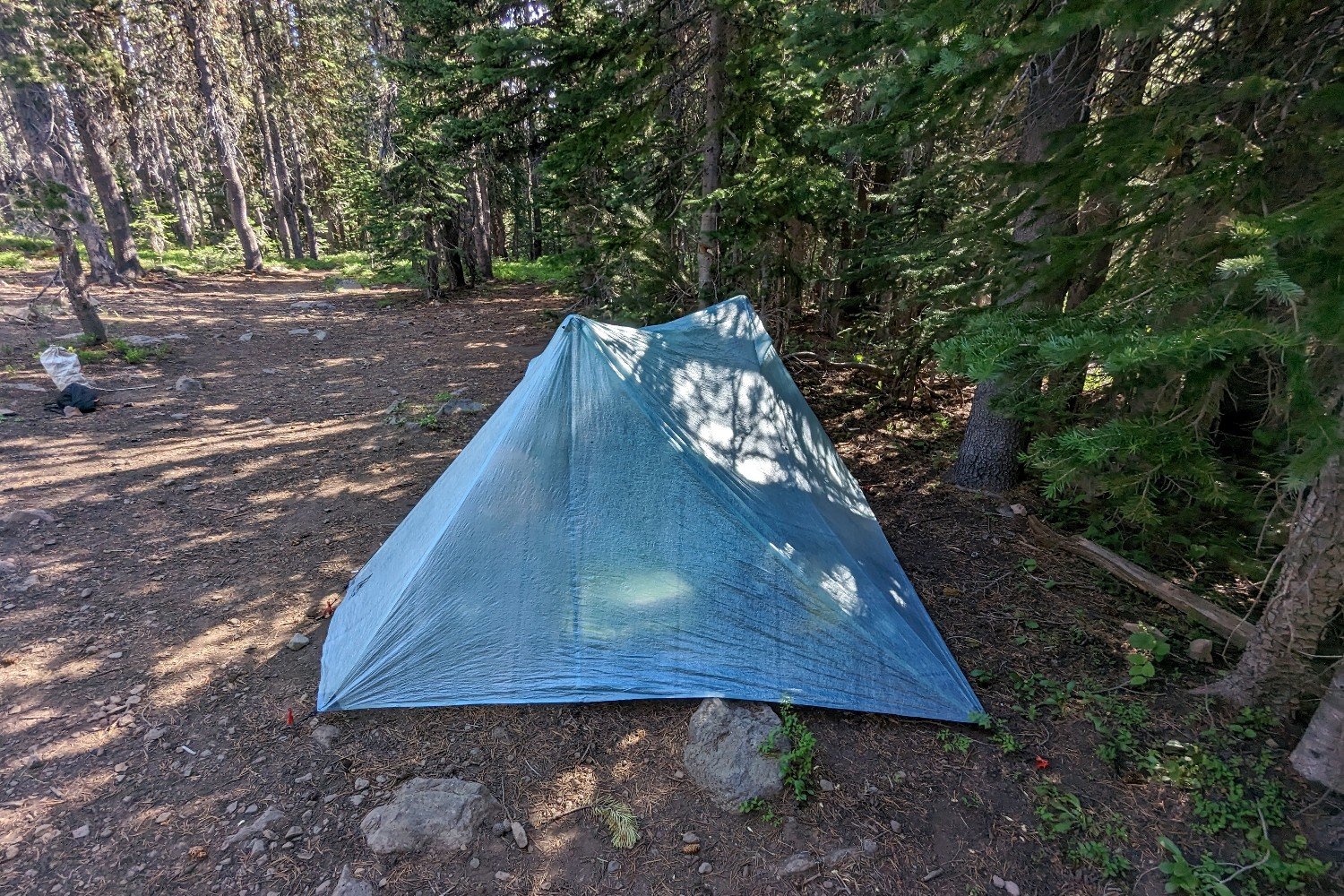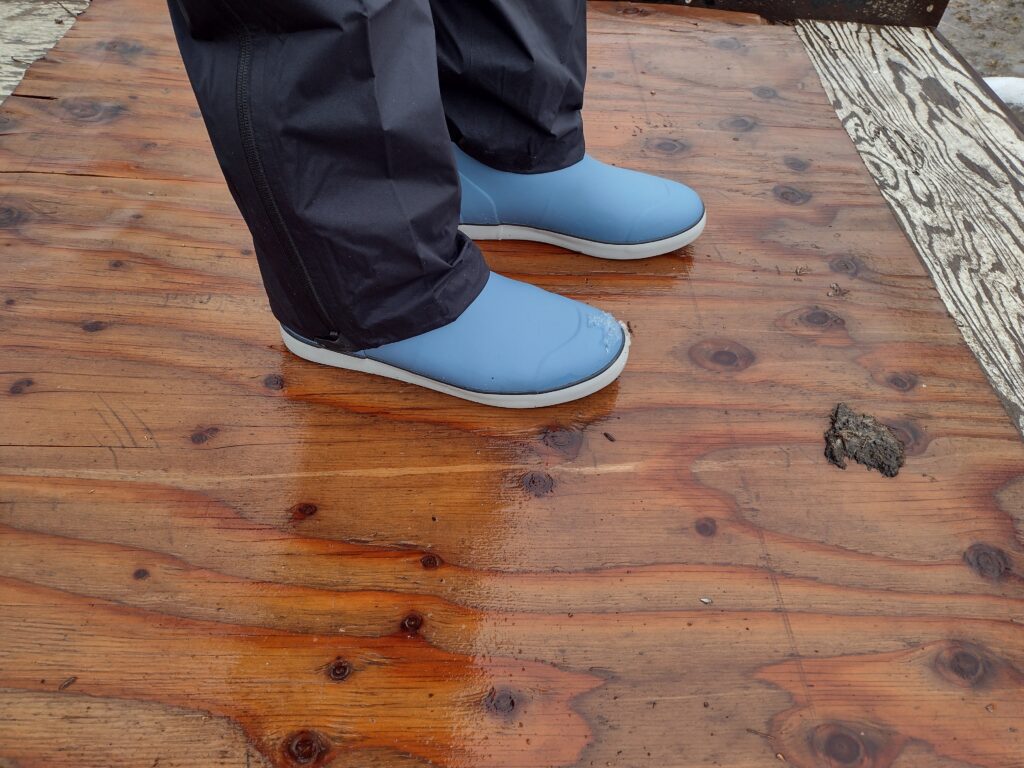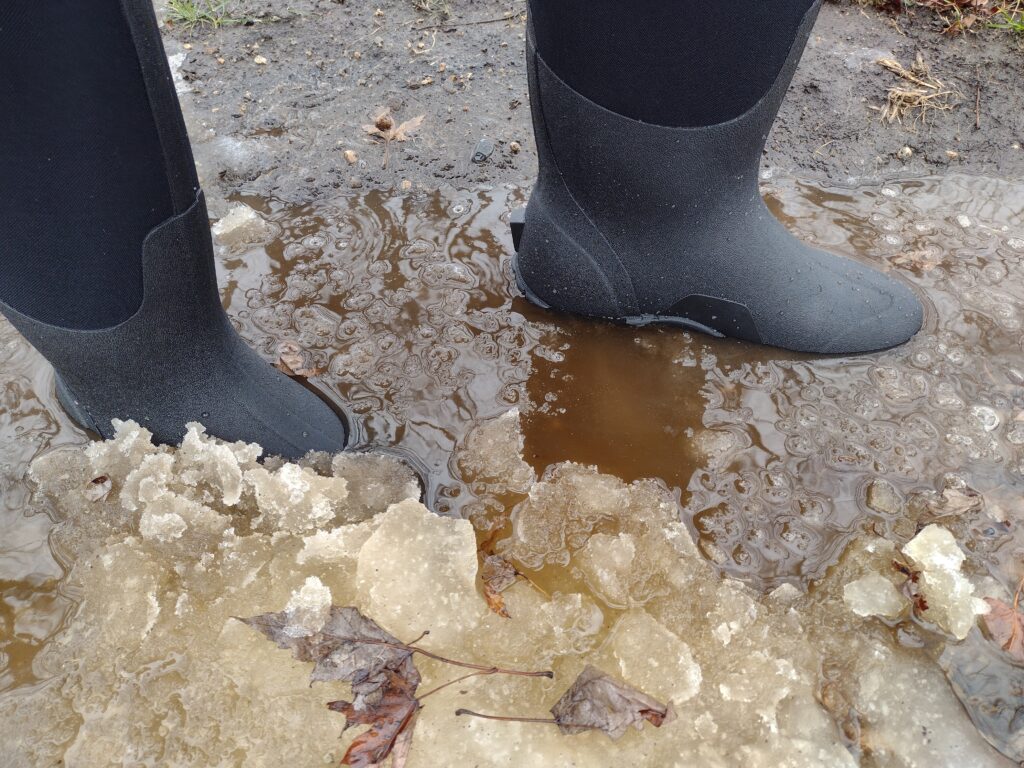If you’ve been in the ultralight scene for more than a minute, chances are you’ve heard about the Durston X-Mid Pro 2. This unique tent gets a lot of hype in UL circles, but does it live up to the praise? Read on to see our honest thoughts and analysis from field-testing the X-Mid Pro.
Table of contents
Durston X-Mid Pro 2 Tent Review
We independently test everything we recommend.
Buying through links on our site supports our work.
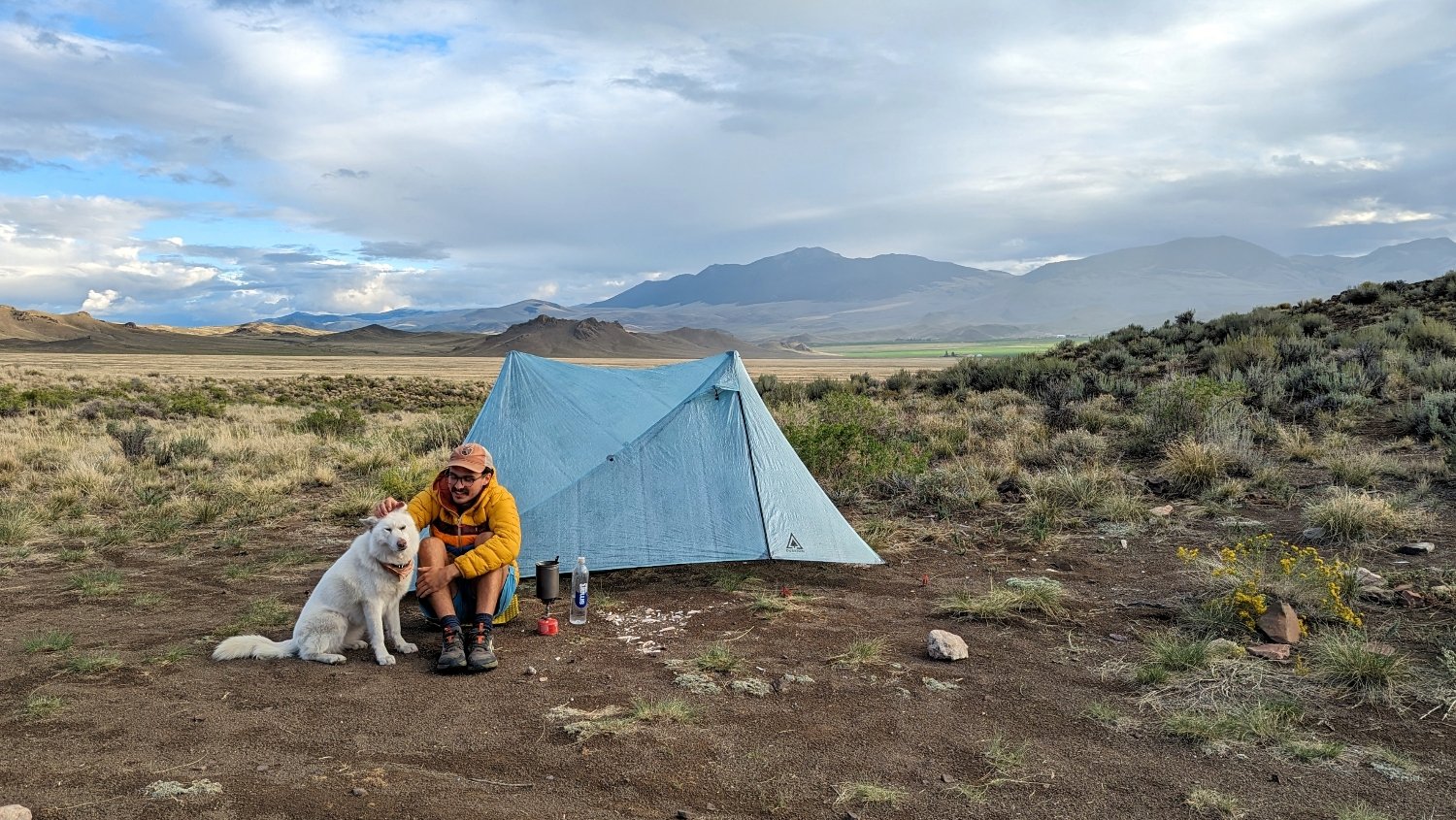
Update:
Durston Gear contacted us to let us know that there are some changes coming to the X-Mid line of tents in October 2023. They’re planning to reduce the price of the X-Mid Pro 2, and they’re releasing a larger version with more space for two hikers. We’ll update our review with changes when the new X-Mid hits the market.
Quick Specs
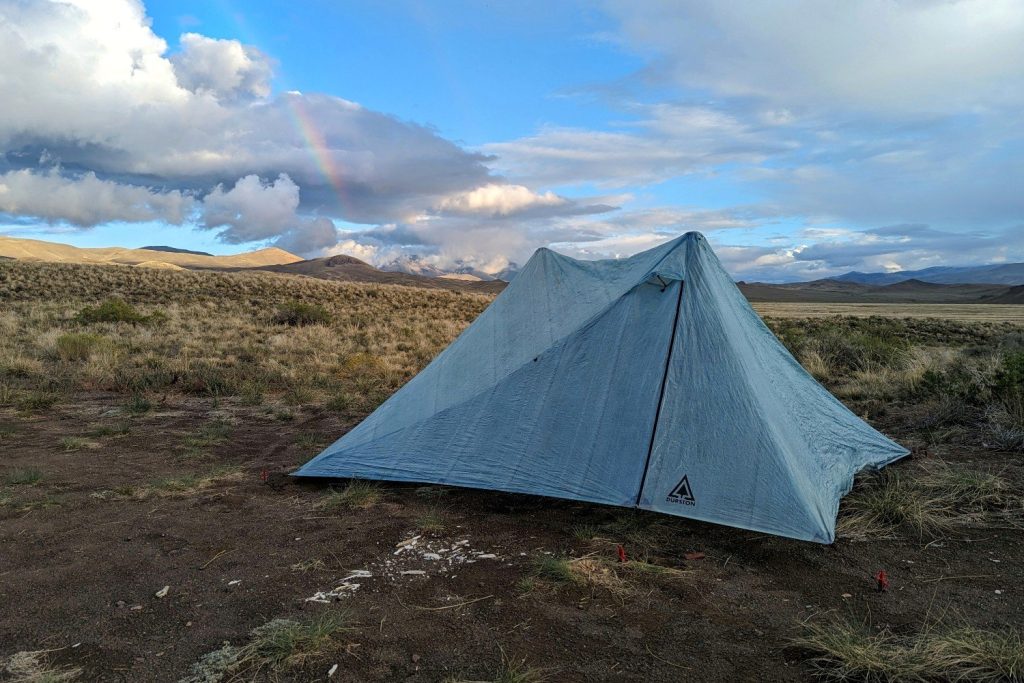
Durston X-Mid Pro 2
Price: $679
Listed Weight: 1 lb. 3.3 oz.
Measured Weight: 1 lb. 4.7 oz.
Dimensions (LxWxH): 90 x 48 x 48 in.
Pros
- Ultralight
- Excellent ventilation
- Easy to pack
- Packs smaller than other Dyneema tents
- Excellent Protection in wet weather
- Durable fabrics
- Excellent vestibule design
- Spacious interior
- Comes fully waterproof
- High pockets creat less sag
Cons
- Interior shape makes usable space less convenient
- Shape makes it tough to get a perfect pitch
- Large footprint & non-freestanding design can make campsite selection difficult
- Expensive
- 90-degree zippers aren’t everyone’s favorite
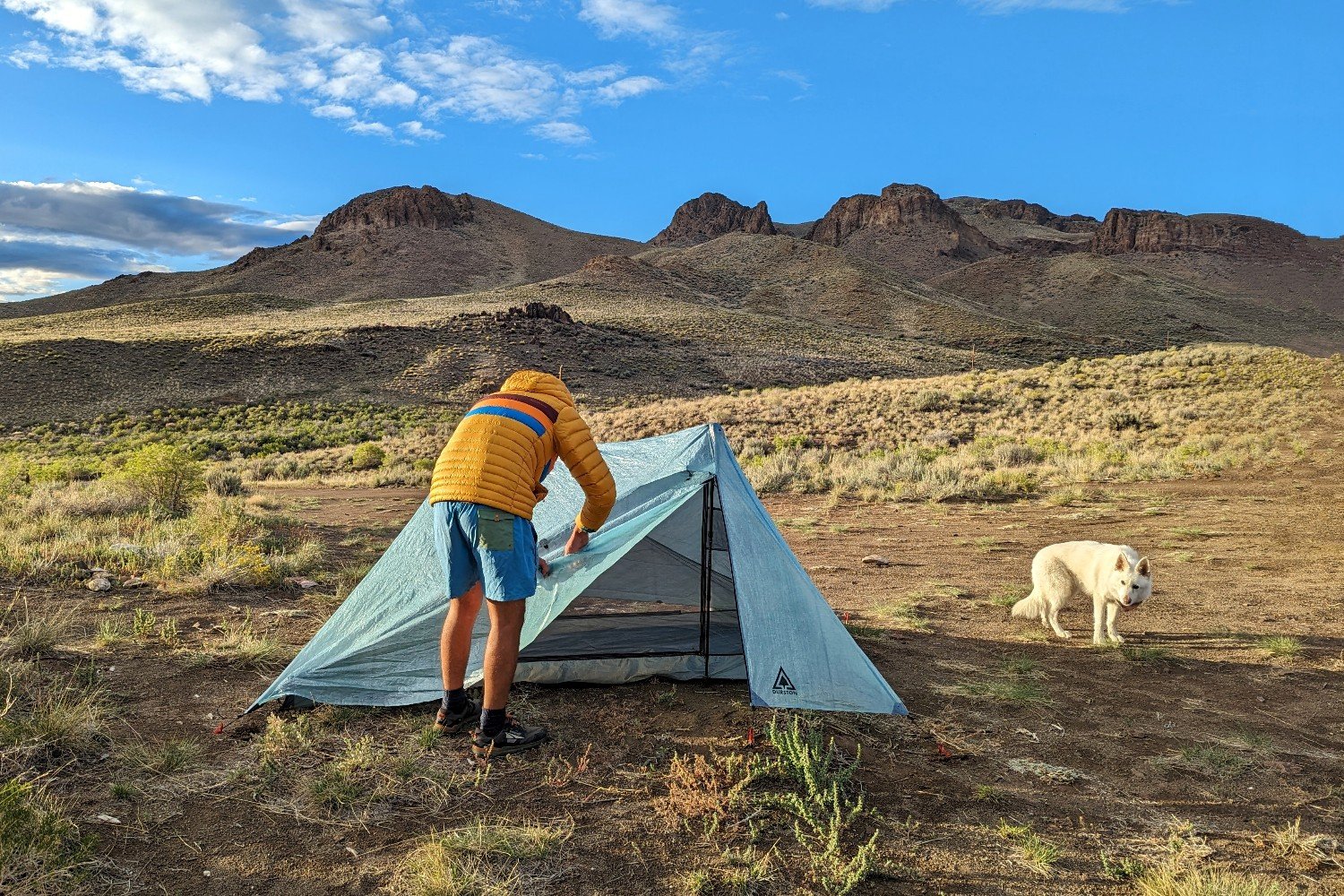
Pros
Ultralight
Durston Gear lists the weight of the X-Mid Pro 2 at 19.6 oz. without the stuff sack, and we clocked it at 20.7 with the stuff sack. No matter which number you go with, the Xmid Pro 2 is lighter than all but two of the 2-person shelters on our list of the Best Ultralight Tents – the Zpacks Duplex and the Hyperlite Mountain Gear Ultamid 2.
We’ve found that keeping our pack weight down helps us enjoy backpacking adventures more. And one of the items that makes a big impact on your pack weight is your shelter. Using an ultralight tent like the X-Mid Pro 2 will make a huge difference in your comfort when covering long distances or tackling big elevation gains.
Excellent ventilation
One of the biggest things we think the X-Mid Pro 2 gets right over other single-wall shelters is the ventilation. All too often tent makers look to shave ounces by excluding a proper way to hold peak vents open or dropping peak vents altogether. The X-Mid has a peak vent on both vestibules and includes small struts to hold them open. Having these open vents up high will give warm air (like from your breath) a way to escape, ultimately lessening the amount of condensation you experience on the inside.
The X-Mid also makes use of the tried-and-true mesh perimeter design seen on tents like the Zpacks Duplex and Six Moon Designs Lunar Duo. We think the X-Mid does it slightly better than the Duplex but not quite as well as the Lunar Duo. The Lunar Duo has a large vertical area of mesh at the head and foot that provides excellent ventilation, while the Duplex perimeter mesh runs more horizontally to the ground. The mesh perimeter on the X-Mid blends the two styles nicely by having a decent amount of mesh at the head and foot that is continuous with the mesh sidewalls (read as: no breaks in the mesh to disrupt airflow), and it sits horizontally to let any condensation drip out.
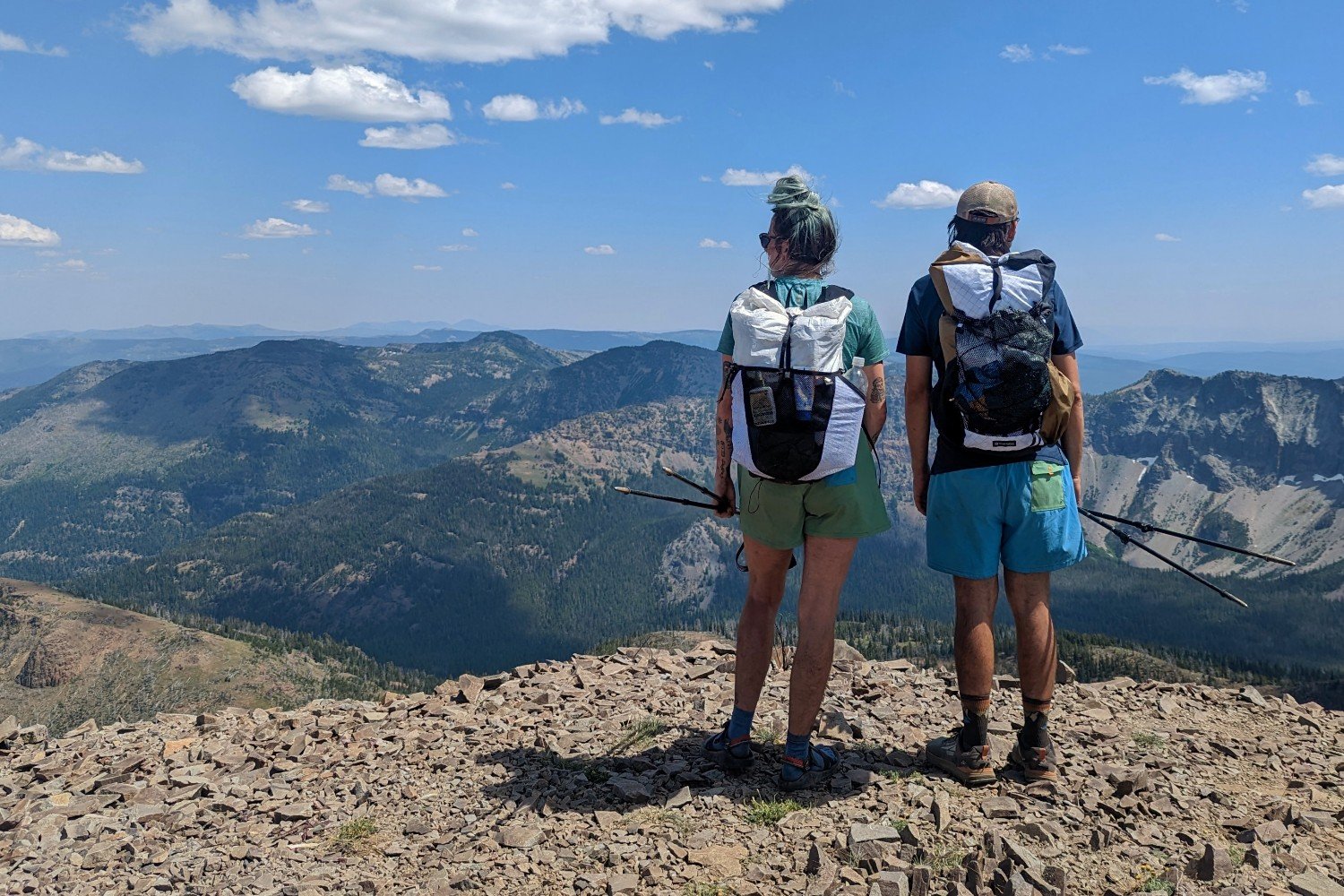
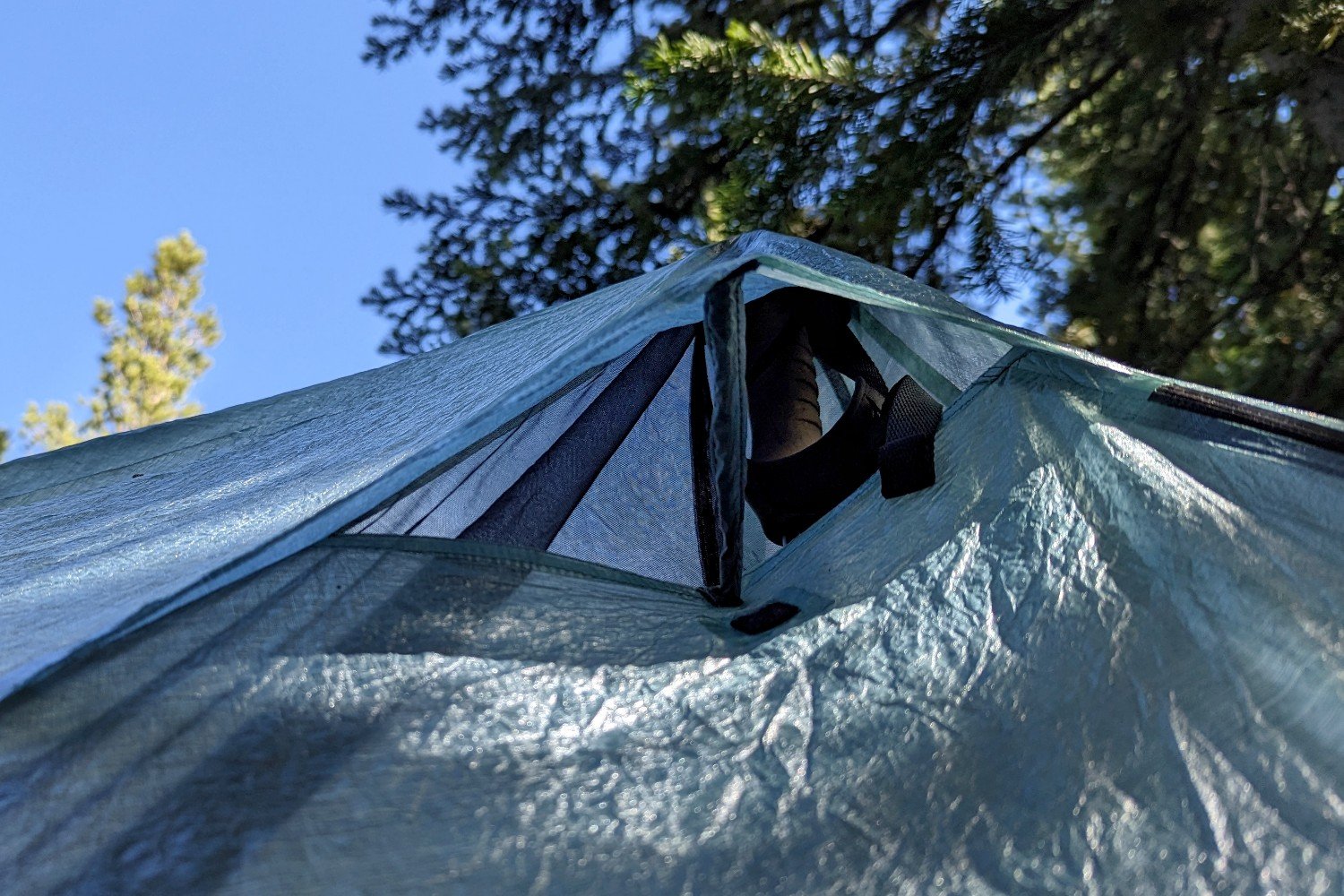
Easy to pack
Silnylon and silpoly tents pack down much smaller than Dyneema tents since they can be stuffed down tight into a stuff sack or the bottom of your pack. The main material of the X-Mid Pro is Dyneema, but the floor is made of silnylon. This greatly reduces the bulk of the tent when it’s packed away compared to other Dyneema shelters.
While you still shouldn’t use the stuff method of packing with this tent because of the Dyneema canopy, we’re impressed with how small it packs down – especially for a tent of this size.
Excellent Wet Weather protection
The shape of the X-Mid Pro doesn’t leave any horizontal areas where rain/snow could pile up. Tents that shed moisture readily are less likely to have bad condensation issues inside when wet weather hits. The shape and vestibule design also keep the doors protected from drips – even when the vestibules are open – which is particularly nice when you have to take a 2 a.m. bathroom break in the rain. We’ll talk a bit more about the weather benefits of the vestibules later in this review.
Another very handy design feature (that most other UL shelters are decent at, but not quite at the level of the X-Mid Pro) is the fact that you can pitch this tent in the rain without getting the interior mesh walls and floor wet. Because you lay the tent out flat in a square with the vestibules zipped up, stake from there, then place the poles through the peak vents, rain never has a chance to enter your living space in the X-Mid Pro 2.
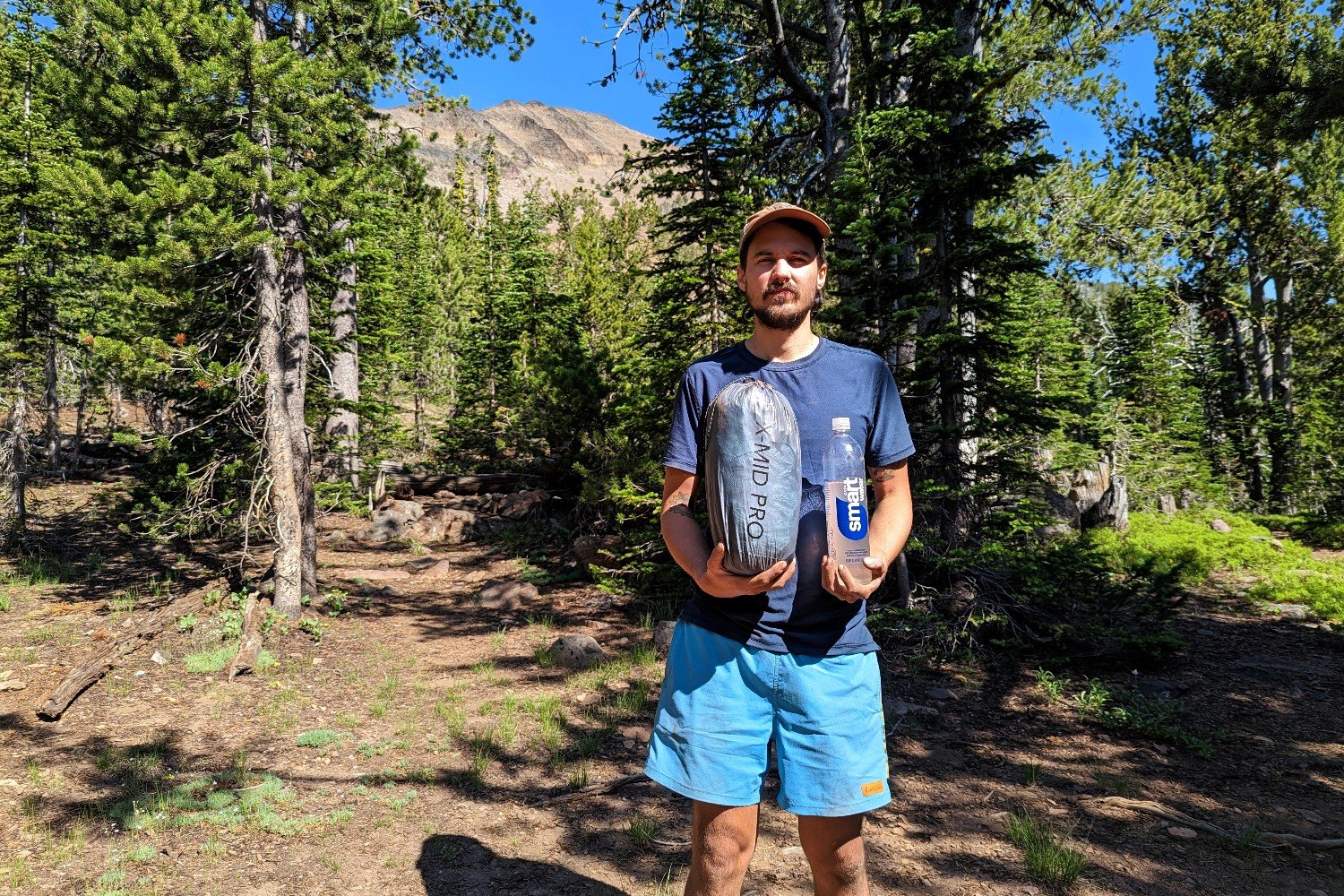
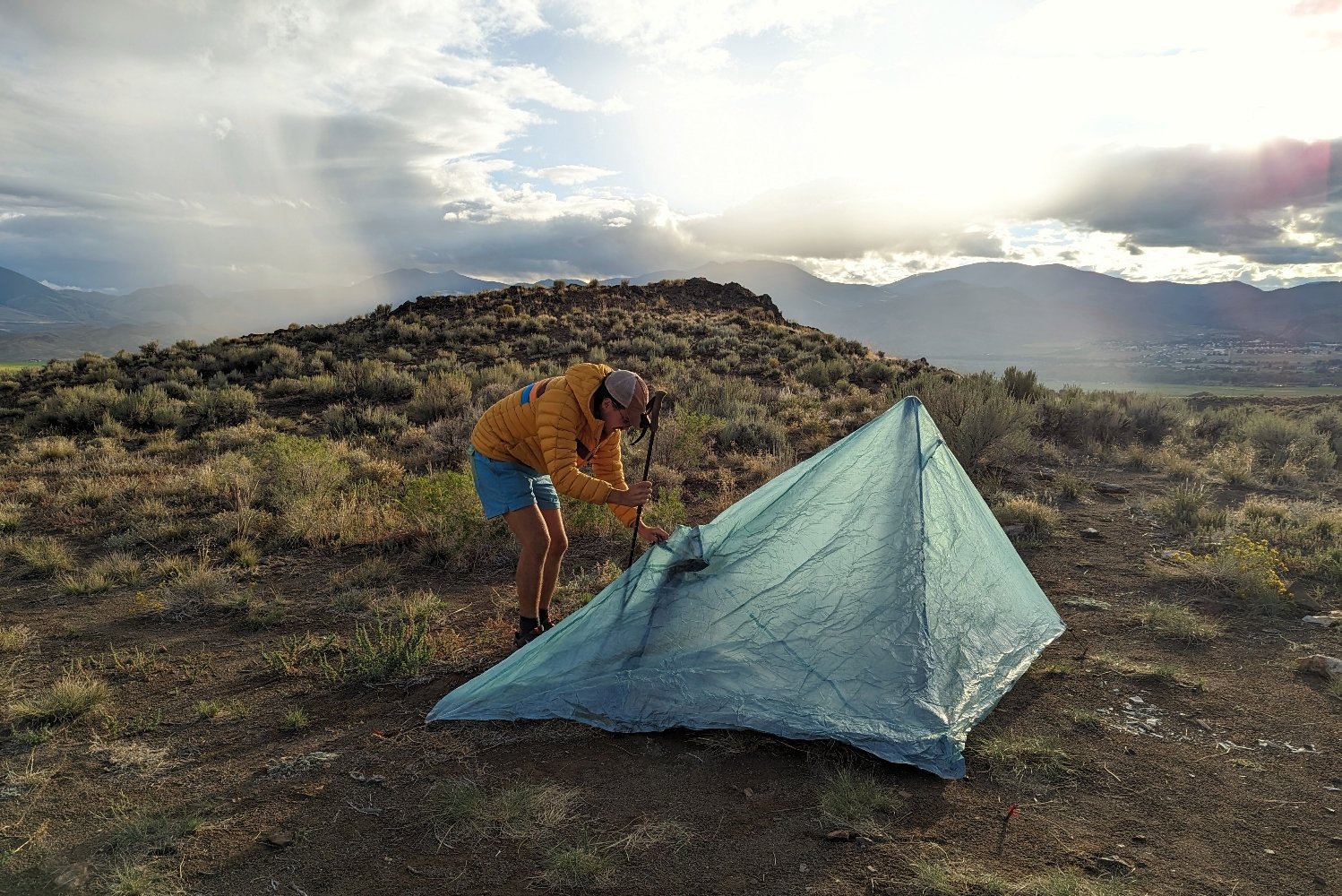
Durable fabrics
The canopy of the X-Mid Pro 2 is made with .55 oz. Dyneema which is extremely strong for its weight. While the X-Mid Pro hasn’t been on the market long enough for us to speak to its longevity, we can say that we’ve used other tents constructed from .55 oz. Dyneema – like the Zpacks Duplex – for years without issue.
One thing that sets the construction of the X-Mid Pro 2 apart from many other DCF shelters is that the seams are hot-bonded. The panels of most other shelters are sewn or bonded together and then taped. If a seam is sewn, each needle hole is – in theory – creating little weak spots. Seam tape is then used to cover the needle holes so the panels are completely waterproof, and it reinforces the seams to regain most of the original strength of the fabric. You can see an example of this type of seam on the Zpacks Duplex.
When two Dyneema panels are bonded, it’s usually done with a special bonding tape that can create a seamless transition through strong adhesive and pressure. Then the bond is reinforced with Dyneema tape. This type of bonding can become weak in extreme hot or cold temperatures. But it’s unlikely that the average backpacker will run into such conditions. You can see examples of this type of seam on many flat tarps, like the HMG Flat Tarp.
Hot-bonding – what’s used on the X-Mid Pro 2 – is a process that creates stronger bonds that won’t lose their integrity in harsh conditions. Is this likely to make a difference to the average user? Probably not. Is it more durable? Yes.
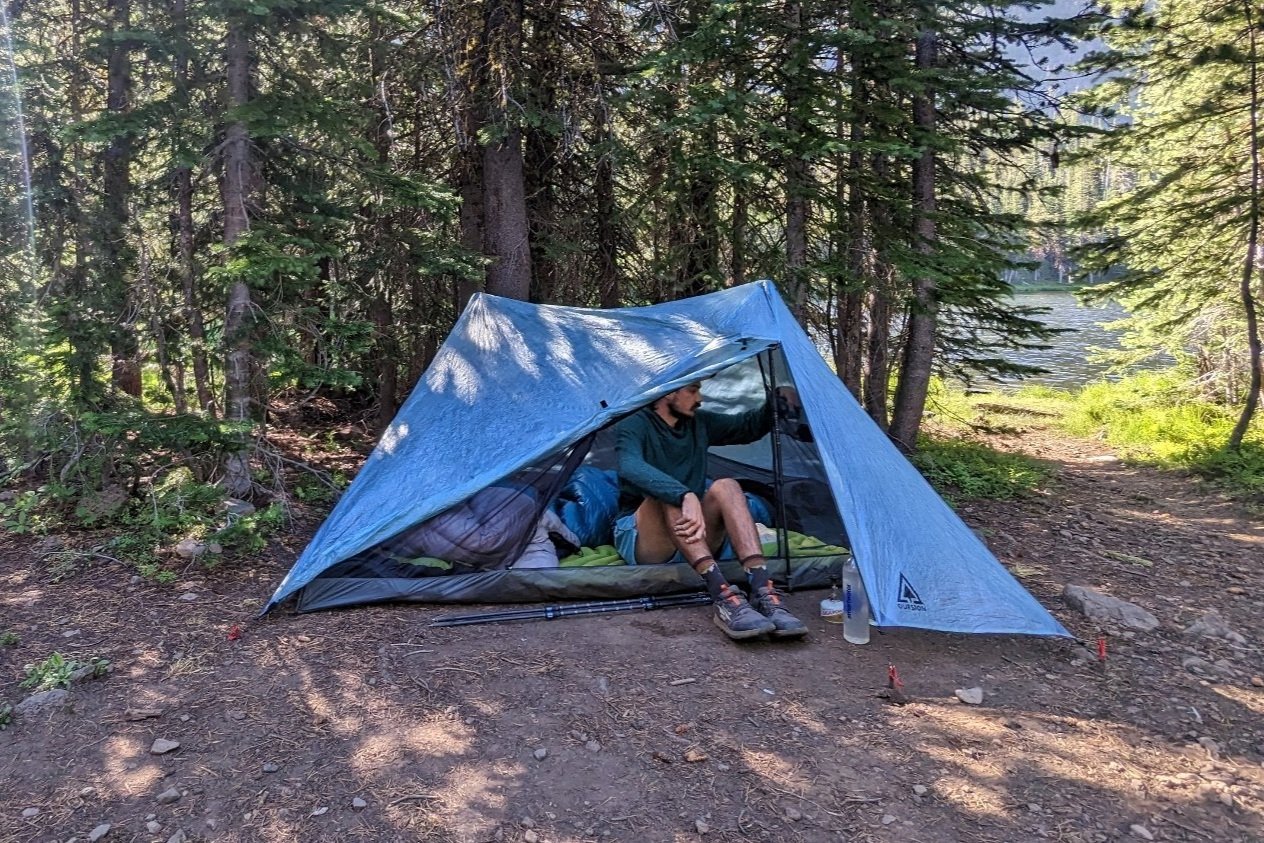
Excellent vestibule design
Many ultralight Dyneema shelters pitch with the vestibules raised fairly high off the ground. This can leave the tent occupant vulnerable to splashback from rain and chilly gusts. While we’ve rarely found ourselves in conditions that make the raised vestibules on other ultralight tents a big issue, we know many hikers aren’t fond of this design.
The X-Mid Pro vestibules, in contrast, can be pitched all the way to the ground and offer full protection from the elements when needed. Or you can stake them a bit higher to increase ventilation.
The vestibules are also incredibly spacious. The squared off corner provides much more usable space than the typical triangle vestibule. There’s plenty of room to store all of your gear out of the way of the door, so you’re not having to shuffle things around every time you want to go in or out.
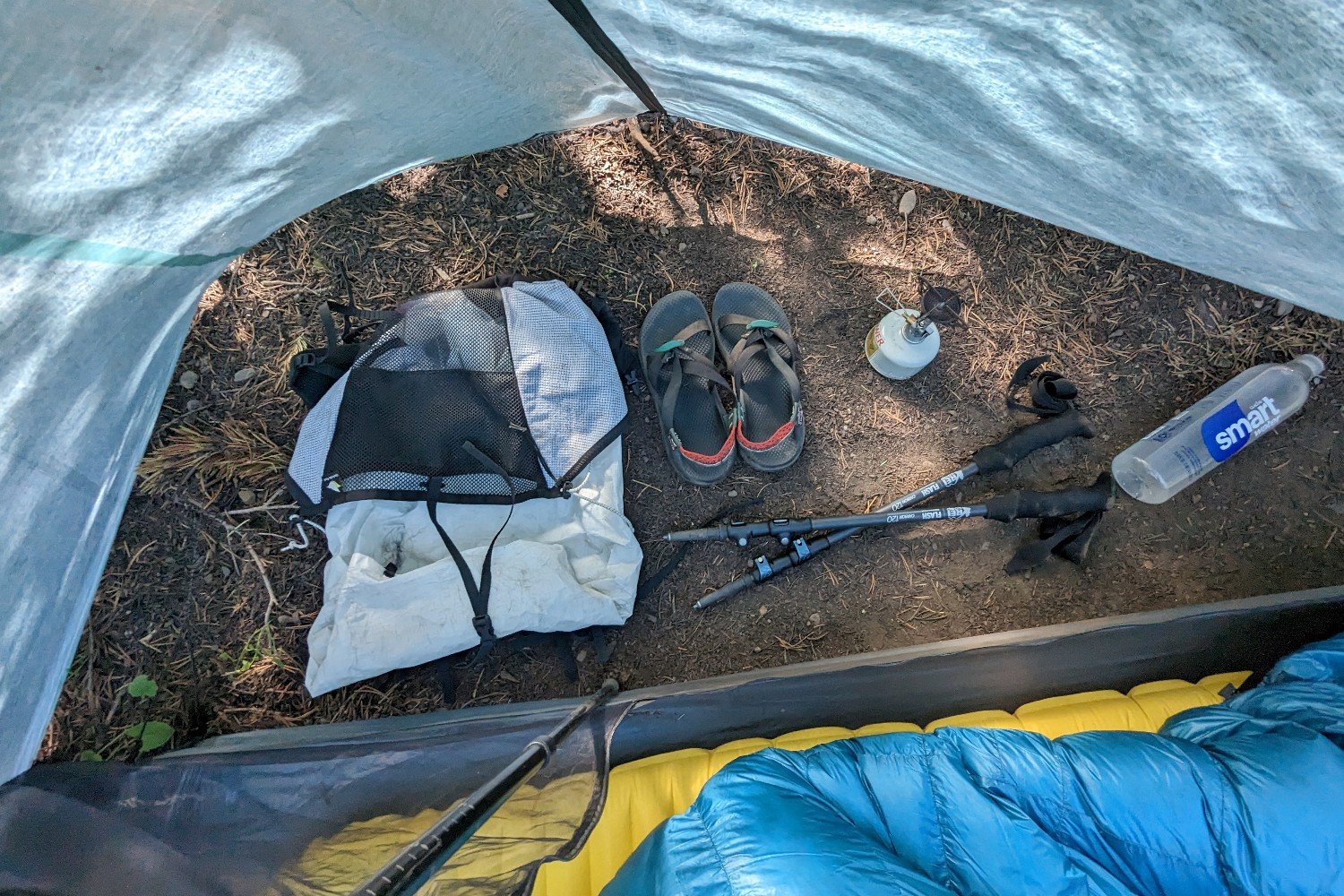
Spacious interior
We found the interior floor space of the X-Mid Pro 2 to be more than adequate for two hikers and exceptionally spacious for one person. The dual pyramid peaks also provide a good amount of headroom at either end and along the diagonal ridgeline in the center. So if hikers sit at opposite ends of the tent facing each other – say, to wait out a storm – both people have a ton of headroom. That said, we don’t generally recommend sleeping on opposite ends as that’s likely to result in one person’s head on a downhill. This can cause blood to rush to the head and make it difficult to sleep.
This pro comes with a bit of an asterisk – we’ll talk a bit more about the issues we have with the distribution of interior volume a little later in this review.
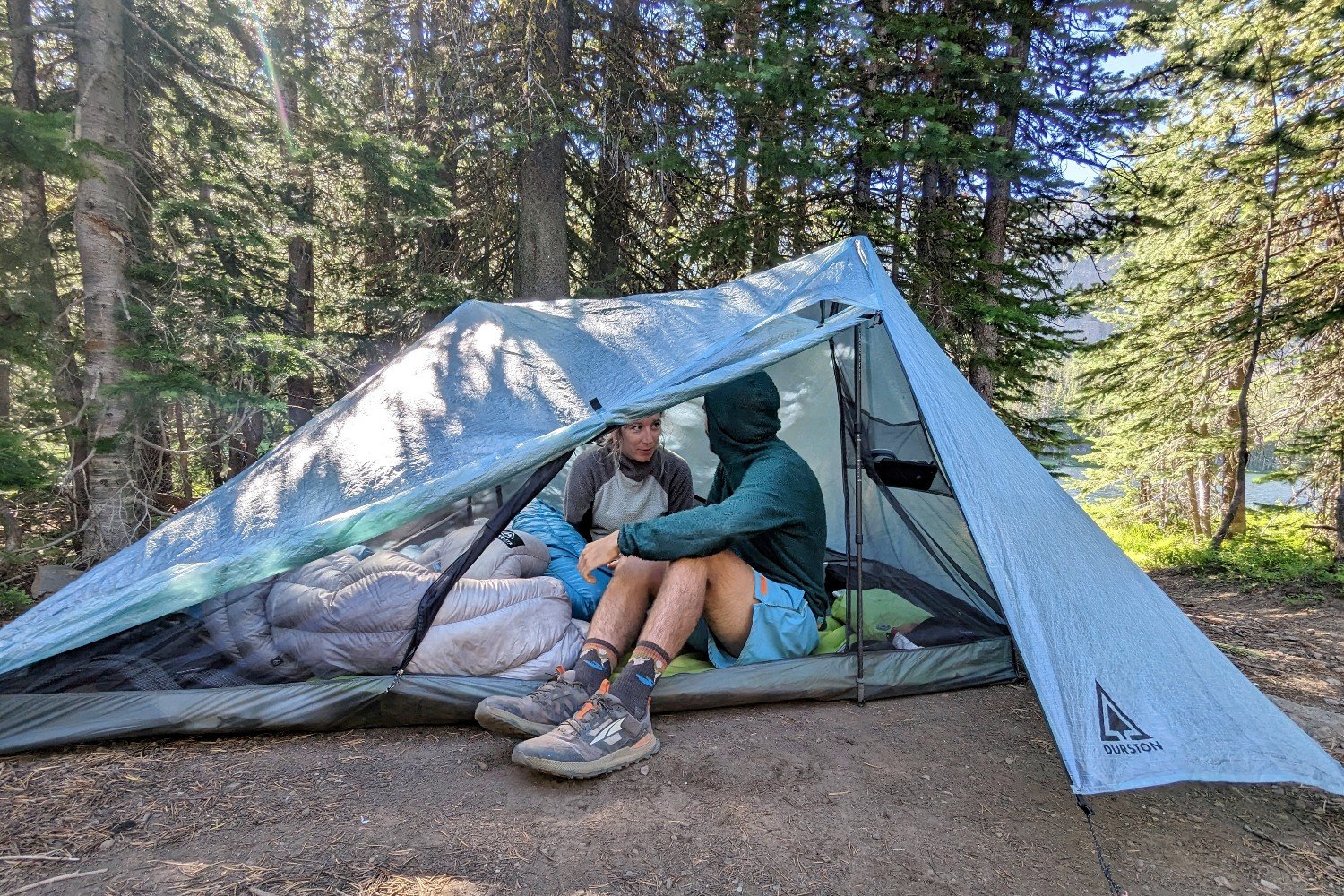
fully waterproof
It’s not uncommon for ultralight tent makers to charge more for in-house seam-sealing or to require the user to do it themselves. We’ve never really been a fan of this since we feel a tent should arrive fully waterproof and ready to hit the trail.
The X-Mid Pro 2 seams are bonded and fully waterproof from the factory. There’s no need for additional seam-sealing.
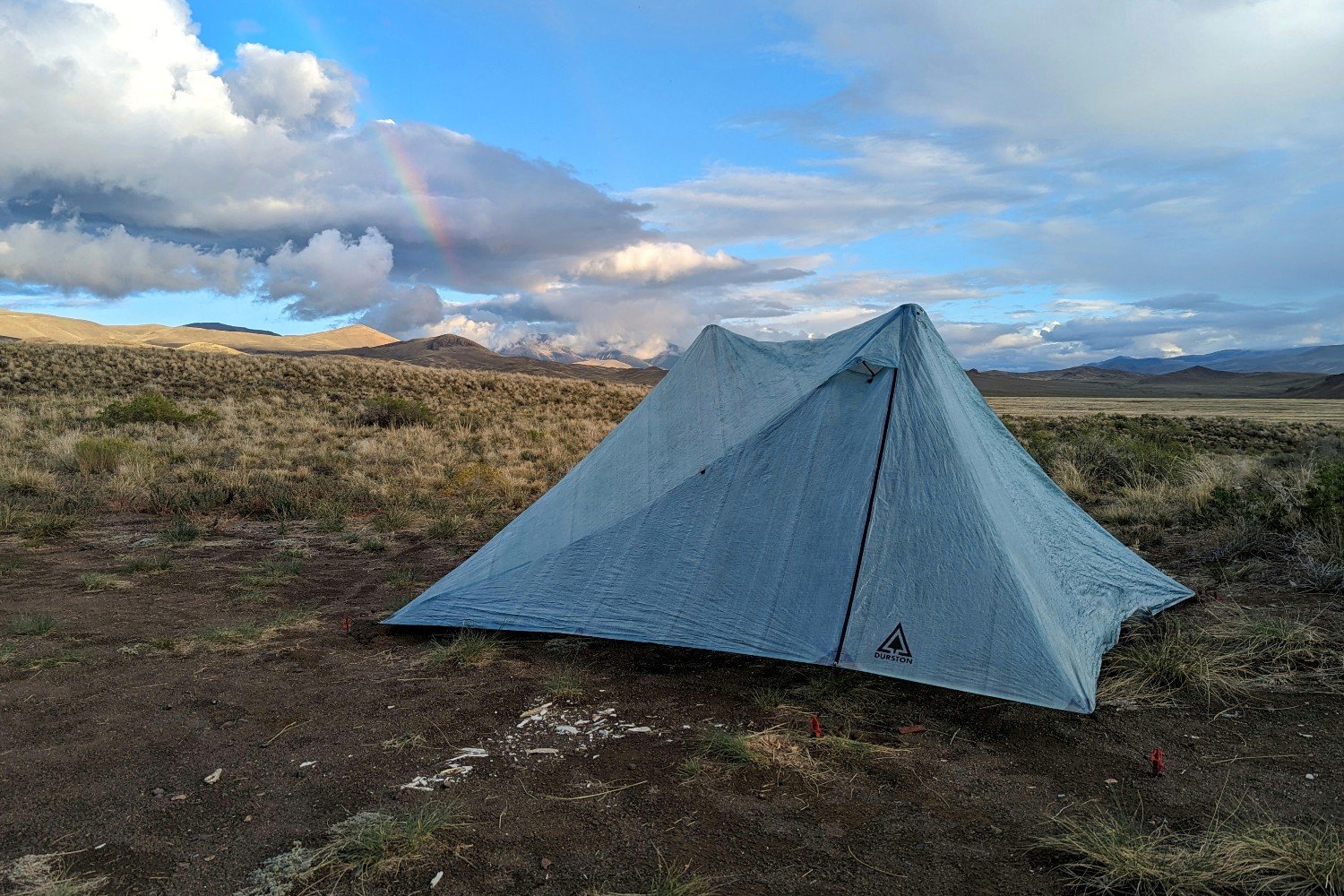
High pockets = less sag
Many tents are constructed with pockets that sit low on the interior wall so they can be easily reached while you’re laying down. While we like the convenience of having small items close at hand, it tends to cause the mesh wall on non-freestanding tents to sag inward. This usually isn’t a big enough gripe to be a dealbreaker, but we definitely appreciate that the higher pockets on the X-Mid Pro 2 don’t encroach on our sleeping area.
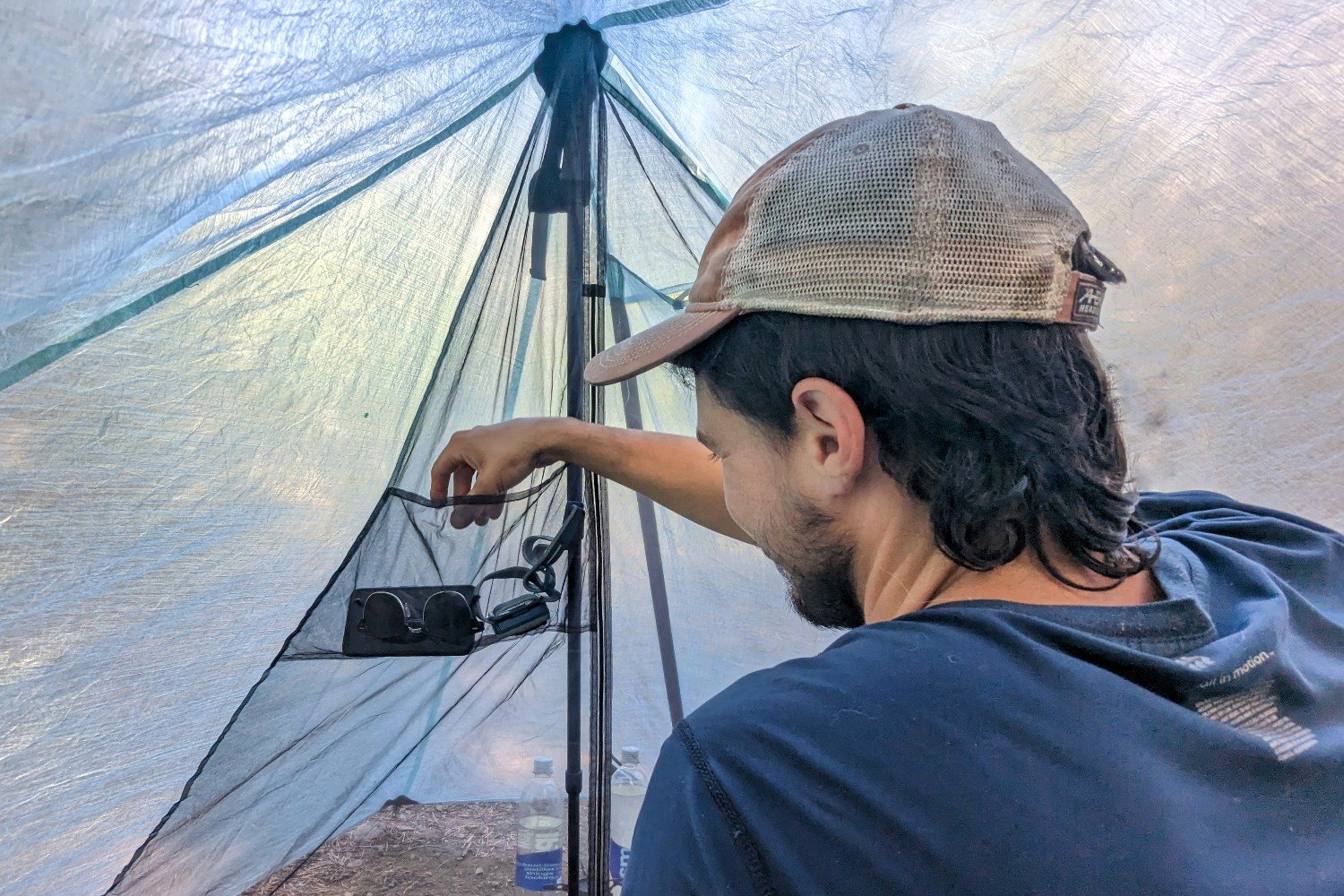
Cons
Interior space less convenient
If you’re looking at the X-Mid Pro 2 as a single-person shelter, this point won’t apply to you. We’ve seen many a happy solo hiker living their best life in the X-Mid, and we agree that it’s an exceptional tent for one.
But for those who will be sharing this tent with another hiker – this is our biggest gripe with the X-Mid and the main reason why it won’t be among our top recommendations for backcountry shelters.
The unique shape of the X-Mid does undeniably provide a lot of headroom, but not where we really want it. The interior of this tent is a parallelogram and the poles are offset from one another to create two opposing peaks at either end. This will work well if you want to sleep head-to-foot so that each hiker gets their own end with ample headspace. But that’s not how most people prefer to share a tent, and it’s not how Durston intends the X-Mid to be used.
Sleeping side-by-side, as most hikers do, results in one person having plenty of room to sit up while the other gets a face full of tent wall in the morning. On top of that, the X-Mid is designed so that the person who got the short end of the stick on headroom also sacrifices some convenience when it comes to storage. Their interior pocket is situated at the opposite end of the tent near the other peak.
tough to get perfect pitch
The X-Mid is often praised for its very simple pitch. While the basics of pitching the X-Mid are quite easy – we found getting a taut pitch with no sag or surfaces for water to pool up to be a bit difficult.
To start, you lay the tent out flat and stake the corners out in a rectangle. The trouble starts if you don’t stake the corners at almost precisely 90 degrees. You’ll get the trekking poles set only to realize the floor isn’t sitting quite right or the ridgeline is bowed or a wall is billowing in the wind. Sure you can move the stakes around and improve the pitch, but we find this is often easier said than done. Backcountry campsites are usually hiding rocks that impede tent stakes just under the dirt’s surface, and even more often the ground isn’t going to be level.
In our experience, A-frame shaped tents are more forgiving when it comes to unideal pitching conditions. Especially thanks to their more compact footprint, which leads us to our next point.
footprint & design makes campsite selection difficult
Non-freestanding tents can pose a bit of a challenge when it comes to campsite selection because you need to be able to get stakes in the ground to give the tent structure. This is a potential issue with all non-freestanding tents, not just the X-Mid. But where the X-Mid adds an extra layer of difficulty is in its large rectangular footprint.
When looking at its overall dimensions, you’ll see that the X-Mid Pro 2 is an 8.3 x 6.7 ft. rectangle. That means you have to find a campsite large enough to accommodate over 55 sq. ft. For comparison, the area occupied by the footprint of the Zpacks Duplex is about 49 sq. ft. That’s about 13.6% smaller, and yet the interior floor space of the X-Mid is less than 2 sq. ft. larger than that of the Duplex.
We have also found that tents with a hexagonal footprint, like the Duplex, are easier to pitch in imperfectly shaped spaces than the rectangular footprint of the X-Mid. And when you factor in our previous point about the need to pitch the X-Mid with its corners as close to 90° as possible, campsite selection can become a bit challenging.
During testing, we sometimes had to pass up epic campsites because the tent wouldn’t fit. We’re not saying this is the only tent that we’ve experienced that with, but we did find it happened more often with the X-Mid.
Expensive
Dyneema shelters always come with a hefty price tag because DCF is an expensive fabric. The X-Mid Pro 2 costs a bit less than the Tarptent Stratospire Li and a bit more than the Zpacks Duplex, but they’re all within a $40 range of each other. We were surprised that their prices were so close because the X-Mid uses a cheaper floor material (silnylon); we were hoping to see some cost savings there. The Duplex and Stratospire are both made with Dyneema canopies and floors.
So why does the X-Mid have a similar price point to tents that are made with more Dyneema? Because the hot-bonding process used on the seams is more costly and time consuming. As we mentioned previously, this process probably won’t make much of a difference to the average user, so we’d rather have the monetary savings from the cheaper material.
You could always get the standard sil-nylon X-Mid 2 for quite a bit less money, but it does weigh almost a pound more (35.4 oz.). That’s still lighter than half of the tents on our Best Ultralight Tents list though, so it could be well worth the monetary savings if you’re willing to carry some extra weight.
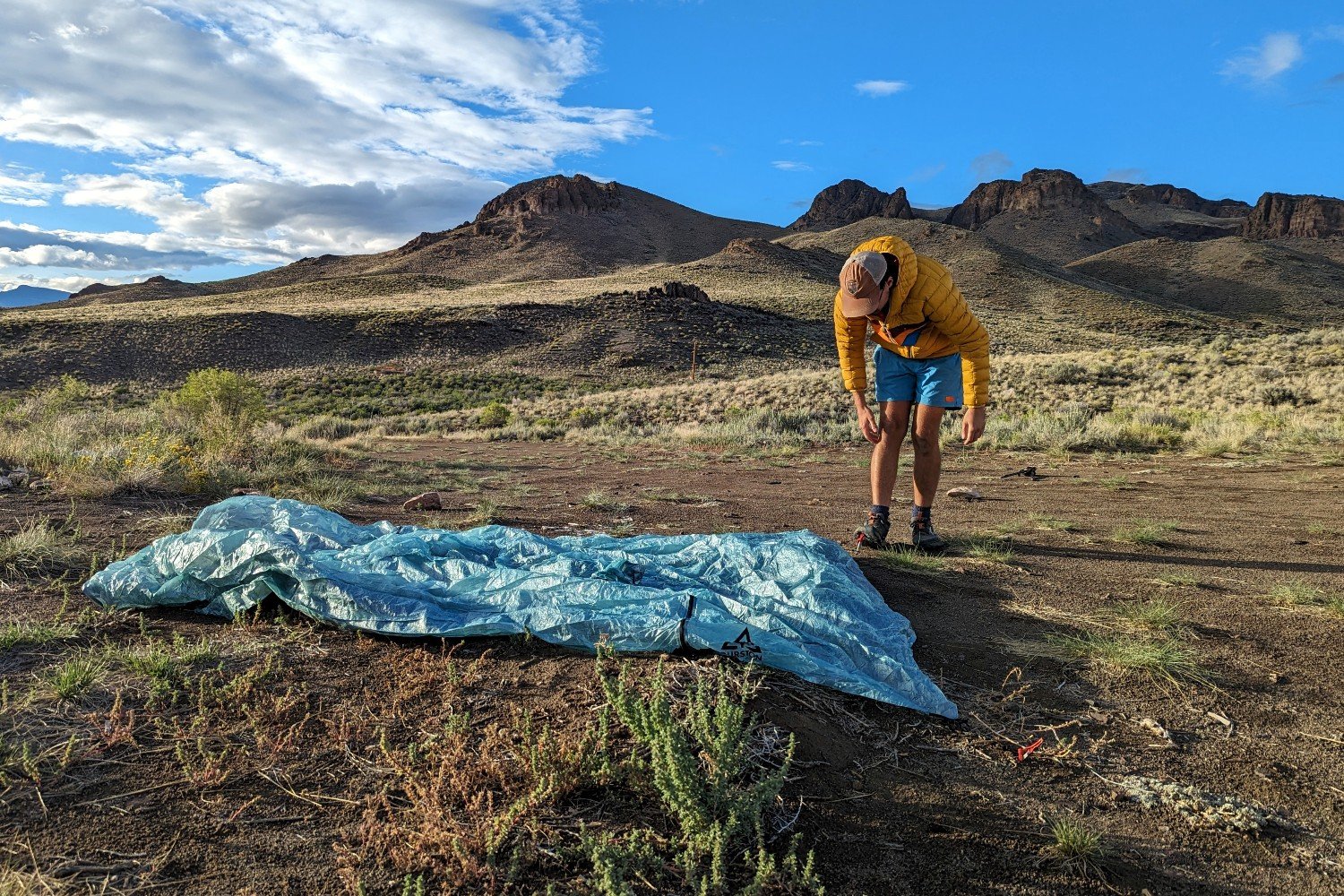
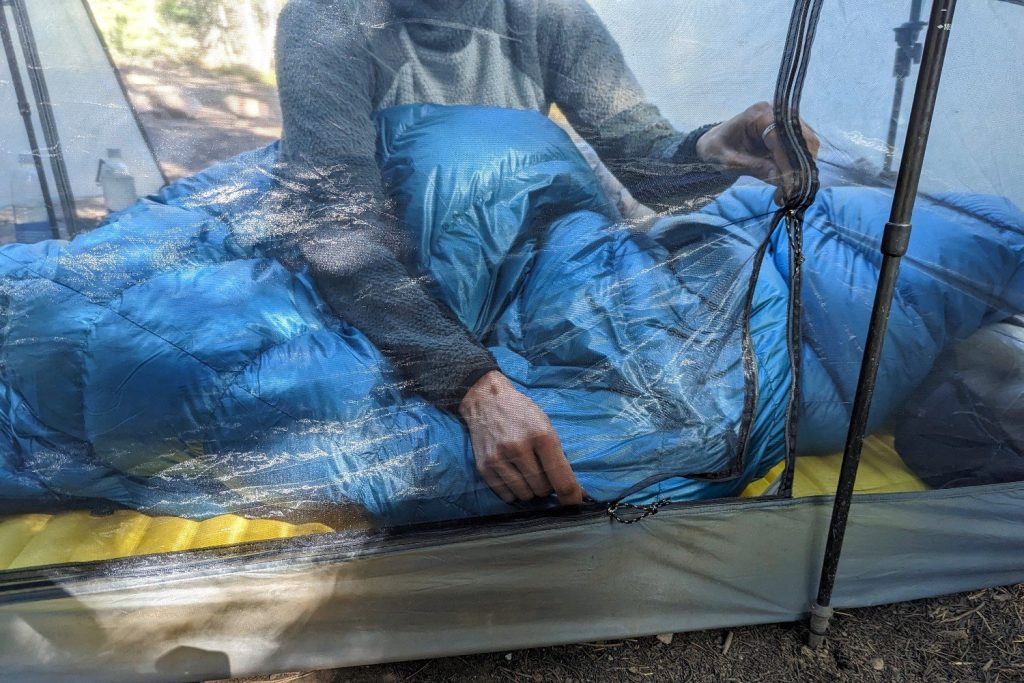
Bottom line
The Durston X-Mid Pro 2 is a popular tent in ultralight circles, and we can see why. It’s lightweight, spacious, provides excellent weather protection, and has great ventilation. But for us the X-Mid missed the mark in a few key areas. We still think it’s a great shelter for solo hikers who want a luxurious amount of space without much weight gain over an ultralight single-person tent, but we’re not quite as keen on this shelter when shared with a partner.
Where we seem to differ in opinion the most from other accounts we’ve read is on the matter of spaciousness. For us, the parallelogram floor shape and the offset poles make the interior a bit awkward to occupy with a partner, as one person will get the short end of the stick when it comes to headroom.
The other key issue we found with this tent is that getting a nice, taut pitch with no sag was harder than we wanted. The large footprint and rectangular shape can also make campsite selection a bit more tedious than with other tents, and we’re not fond of having to struggle with a perfect pitch after a hard day on the trail.
Durston nails many of the details that make for a truly great tent experience, like well-designed vestibules, smart pockets, and outstanding ventilation. But for our two-person adventures, we found that the X-Mid fell a bit short of our high expectations.
